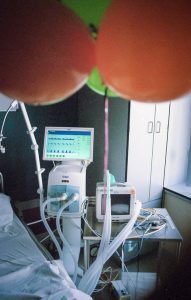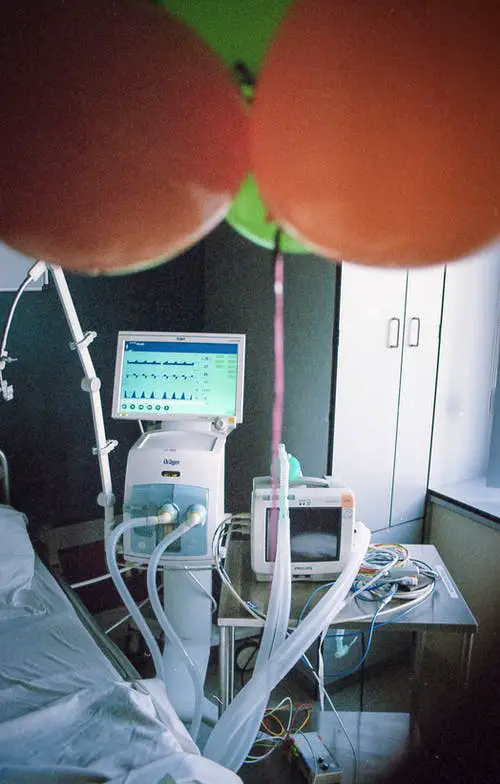Сpap vs Ventilator. What’s the difference?
Why are CPAP Machines and Ventilators needed?
Today CPAP Machines and Ventilators are used in the treatment of obstructive sleep apnea syndrome, snoring, cardiovascular diseases, high blood pressure, respiratory failure, severe drowsiness, problems with potency, weight problems, depression, diabetes, insomnia.
CPAP therapy is a panacea for patients with respiratory disease – sleep apnea.
In addition, this method is a solution to problems with sleep and breathing during sleep.
What is the difference between CPAP Devices vs Ventilators?
CPAP therapy is based on the use of CPAP devices .
A CPAP machine is essentially a small compressor capable of delivering a constant flow of air at a specified pressure to the airway.
At the same time, the CPAP device does not allow the airways to close and thus block the flow of air and, most importantly, the oxygen necessary for the body.
A medical ventilator is a device that helps a person breathe.
Mechanical ventilators are used during surgeries that require the patient to sleep. Medical ventilators are also used when a person has a condition that prevents effective breathing. Various conditions can cause breathing problems, including respiratory problems, head injuries, heart disease, and medicine overdose.

The role of CPAP Machines
Thanks to this CPAP Therapy, it is possible to exclude the danger of sudden death from lack of oxygen, to achieve normalization of sleep.
At the same time, a person feels completely differently: he gets enough sleep, feels vigorous and healthy, does not feel sleepy during the day, does not fall asleep while driving, headaches in the morning and depression go away, blood pressure normalizes, weight gradually decreases.
The role of Ventilation
Air and supplemental oxygen enter the lungs through a ventilator. A ventilator helps patients improve the oxygen levels in their lungs. It can also help remove carbon dioxide from the lungs and reduce the burden on breathing.
Mechanical ventilation can be used to provide complete support, which means that the ventilator is breathing for the patient. It can also be used to help with breathing. This means the patient is still breathing spontaneously, but the ventilator is providing some relief.
How to determine the need for ventilation?
To simplify, the ventilator takes over the process of providing the body with oxygen when the lungs stop working. This gives the body time to fight the disease.
Timely connection to the “fan” maximizes the chances of survival. If a person who has stopped breathing is not connected to a ventilator, their internal organs are no longer supplied with oxygen. Soon after, the heart stops beating, the blood supply stops, and within minutes the patient dies.
How do patients feel under ventilators?
There are two types of mechanical ventilation: invasive and non-invasive. With non-invasive artificial respiration, a tight-fitting mask is put on the patient’s face, through which air is supplied to the lungs using the ventilator. In this case, the person retains all the natural functions of the respiratory tract.
To conduct invasive ventilation of the lungs, the patient is intubated – a tube is inserted into the trachea through the nose or mouth.
In some cases, a surgical procedure called a tracheostomy is performed: the doctor makes a small incision in the lower part of the neck to open the trachea, a tube is inserted into it, and then a ventilator is connected to it.
People connected to “fans” can neither speak, nor eat, nor drink: they have to be artificially fed through a tube. Because invasive ventilation is also painful, patients are usually placed in a coma using anesthesia.
How to determine the need in the application of the CPAP therapy method?
Initially, in order to draw any conclusions, you need:
- Consult a specialist (sonologist).
- Complete sleep diagnostics at home or at the hospital.
- After that it will become clear whether you need CPAP therapy or not. If necessary, in our center you can first use the rental of a CPAP machine, and then purchase it.
The work principle of CPAP Machines
An СPAP machine is a small compressor that delivers a constant stream of air at a specific pressure to the airway through a flexible tube and a sealed nasal mask.
Thus, it prevents the airways from closing and blocking the flow of air (and the oxygen needed by the body). As a result, the risk of sudden death from lack of oxygen is eliminated and normal sleep is ensured. The patient gets enough sleep and the next day he feels healthy.

Morning fatigue, weakness, drowsiness, “vagueness” of consciousness, heaviness in the head disappear. The risk of car accidents and other accidents due to unexpected falling asleep is significantly reduced.
CPAP Method. There are several types of modern CPAP therapy devices:
The method was proposed in the 80s of the XX century in Australia and quickly gained acceptance, as it made it possible to effectively cope with the problem of snoring and respiratory arrest during sleep within the framework of home treatment.
It consists in the constant injection of air into the respiratory tract, due to which the necessary pressure is maintained, preventing tissue closure and respiratory arrest while a person is in a state of sleep.
The pressure is achieved due to the tightness of the air circuit: the air is pumped by the compressor into a flexible hose and supplied to an elastic polymer mask that fits snugly to the face.
The procedure becomes part of the daily routine, since the therapy does not have a cumulative effect: the method acts mechanically, without affecting the cause of the pathological condition, and a few days after the termination of the use of the apnea apparatus, it returns.
Standard – where air is pumped constantly, regardless of the breathing phase
BIPAP Machine is a two-phase apparatus: compression increases with inspiration, and with expiration it decreases
check the best BIPAP machines HERE
Auto-CPAP – air supply starts only at the moment when the device detects the stop of breathing, which helps the patient to inhale; the pressure rises gradually and is fixed at a level sufficient for inhalation
In addition to the availability of special modes and compressor settings (BIPAPs and auto-CPAPs), there are a number of additional functions that make daily use comfortable and that you should pay attention to when choosing:
Check the best CPAP machines HERE
Smartflex – automatic pressure regulation depending on the breathing phase.
Air heating – relevant for the cold season, outdoor recreation, patients with chronic inflammatory processes in the respiratory tract
Moisturizing – helps to avoid many problems associated with overdrying of the mucous membrane (runny nose, pharyngitis, infections, bleeding, atrophy)
Devices can be of different sizes – you can pick up a small mobile model for travel if the patient moves intensively (business trips, travel)
The work principle of Ventilations
To connect a patient to a ventilator, doctors insert an endotracheal tube into the airway.
When a disease affects the lungs, the immune system responds by dilating the vessels so that more antibodies can enter the bloodstream.
But because of this, fluid can accumulate in the lungs – it becomes harder to breathe, and the body begins to experience a lack of oxygen.
To counteract this, a compressor is used to bring oxygen-rich air or other medical gasses into the lungs.
Another component of the ventilator is a humidifier, which heats the air from the ventilator to body temperature and moisturizes it.
Ventilated patients are given drugs that relax the diaphragm and other muscles to allow the ventilator to fully regulate breathing.

Why is there a lack of ventilators?
With the rapid spread of the coronavirus, the demand for ventilators around the world has skyrocketed.
The number of beds in intensive care units in most countries is not designed for the constantly increasing flow of patients who simultaneously require mechanical ventilation.
At the same time, modern high-tech ventilators, the cost of which sometimes reaches 50 thousand euros, cannot be purchased in the shortest possible time.
There are only a few manufacturers of ventilators and ECMO devices in the world – extracorporeal membrane oxygenation, capable of enriching blood with oxygen, in other words, working like artificial lungs.
Currently, these companies have maximized their production capacity, but they are experiencing difficulties in supplying – including consumables such as breathing tubes and cannulas.
Problems with the care and treatment of patients with severe COVID-19 symptoms may also arise due to the lack of qualified personnel able to operate ventilators in intensive care units
Final Words
It goes without saying that CPAP machines can’t replace ventilators without being modified.
CPAP machines and ventilators are very similar, but unfortunately can not be used interchangeably.
Both machines help us in breathing, help with the movement of air into and out of lungs, and also provide extra oxygen.
But remember, they have an important difference. Ventilators will be used in emergency cases.
It should be noted that the ventilation is not a means of treating and restoring damaged lungs, but only gives a respite to the lungs so that they can recover on their own.
Patients with milder symptoms may be prescribed non-invasive ventilation with CPAP therapy.
CPAP machines are ideal for Overweight people who often suffer from this ailment, which is often a prerequisite for sleep apnea. CPAP therapy promotes weight loss in patients, as during sleep, metabolism occurs and normal levels of cortisol, the stress hormone, are maintained. When sleep is disturbed or not enough, an imbalance occurs, as a result of which fat builds up and muscle tissue breaks down.
CPAP machines use pressure to push air into the airway through a face mask, while ventilators always push air into and out of a patient’s lungs through a tube inserted in the mouth or nose.
